Primary Sources
Primary Sources
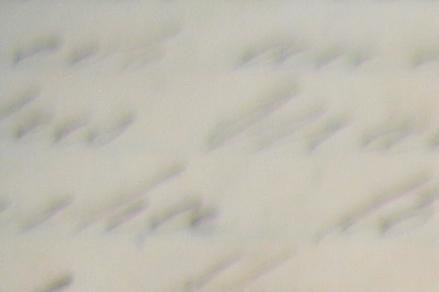
Teachers, need a primary source to create a lesson in the classroom? Students, need a source for a research project?
Here, we've listed the primary sources featured in our Unit Plans. Click on a primary source to go to its page, where you may find additional images, transcriptions of the text, a citation guide for including the source in a bibliography, or ways to purchase copies of the source for the classroom.
HSP's collections are not limited to the primary sources listed here. To see all that HSP has to offer, come visit us or explore our collection online through the Digitial Library and the Discover online catalog.
Some sources have handwriting that is difficult to read. If you need help decoding handwriting, check out this guide from Ancestry.
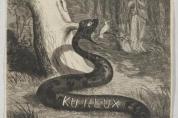 Produced during Reconstruction, this cartoon represents how the Ku Klux Klan was killing the hope for peace in the former Confederate states. |
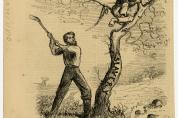 In this cartoon, President Lincoln is holding an axe about to chop down a thin tree marked slavery. At the top of the tree, a man is desperatly holding on. The man at the top represents the Confederacy trying to hold on to slavery as Lincoln destroys it. |
 In reference to the 1864 election, this cartoon was insinuating that the ballot was rigged and that those voting for General George McClellan were barred from the vote. |
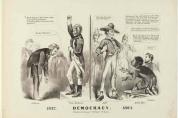 This cartoons is referencing the 1864 presidential election when General McClellan ran against President Lincoln. McClellan was known as a Southern appeaser, which upset many Northerners. This cartoon shows Mclellan groveling to Jefferson Davis ,in contast to President Andrew Jackson who is giving the demands rather than receiving them. |
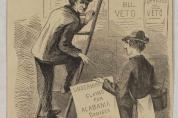 Presidet Andrew Johnson putting up a new bill. This cartoon illustrates the frustration many had after the President vetoed several bills. |
 The Dead House on the Schuylkill stood on what is now the west side of 22nd Street between Race and Vine Streets. It was used to store dead bodies during the Yellow Fever epidemic of 1793. This watercolor was made by David. J. Kennedy from an old pen & ink drawing by Birch. |
 Benjamin Rush (1745-1813) was a Philadelphia doctor who was involved in the military and political aspects of the American Revolution and early republic. He was controversial as an advocate for inoculation (a new practice) and bleed letting (an traditional medical practice). He was also an abolitionist and advocate for mental health. This engraving is after a painting by Thomas Sully. |
 This bound volume contains incoming correspondence to Doctor Benjamin Rush regarding the Yellow Fever epidemic of 1793 in Philadelphia. Letters are written by a variety of Philadelphians, many seeking treatment or aid in identifying symptoms of Yellow Fever. Some letters contain graphic descriptions of symptoms. |
 Excerpts are transcriptions of testemonies regarding the Kensington Riots from Morton McMichael, High Sherrif of Philadelphia, and Brigadier General Cadwallader. |
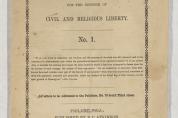 This article from a magazine called The Republic is on the Kensington Riots. |
 This edition of the newspaper was published during the Bible Riots. This particular page features an assortment of advertisements. |
 A long poem by an unknown writer on the Kensington Massacre from May, 1844. |
- ‹ previous
- 8 of 22
- next ›
